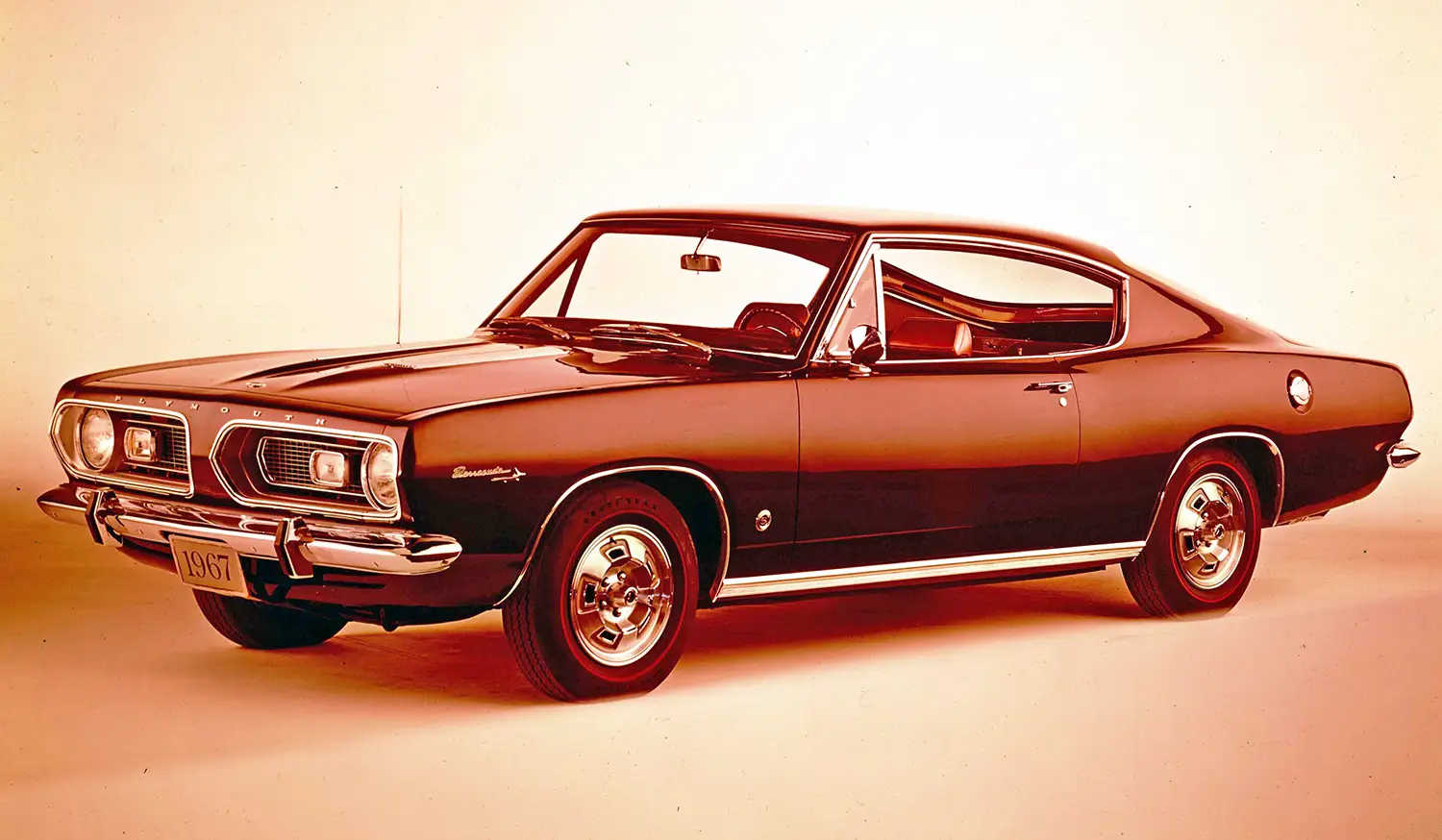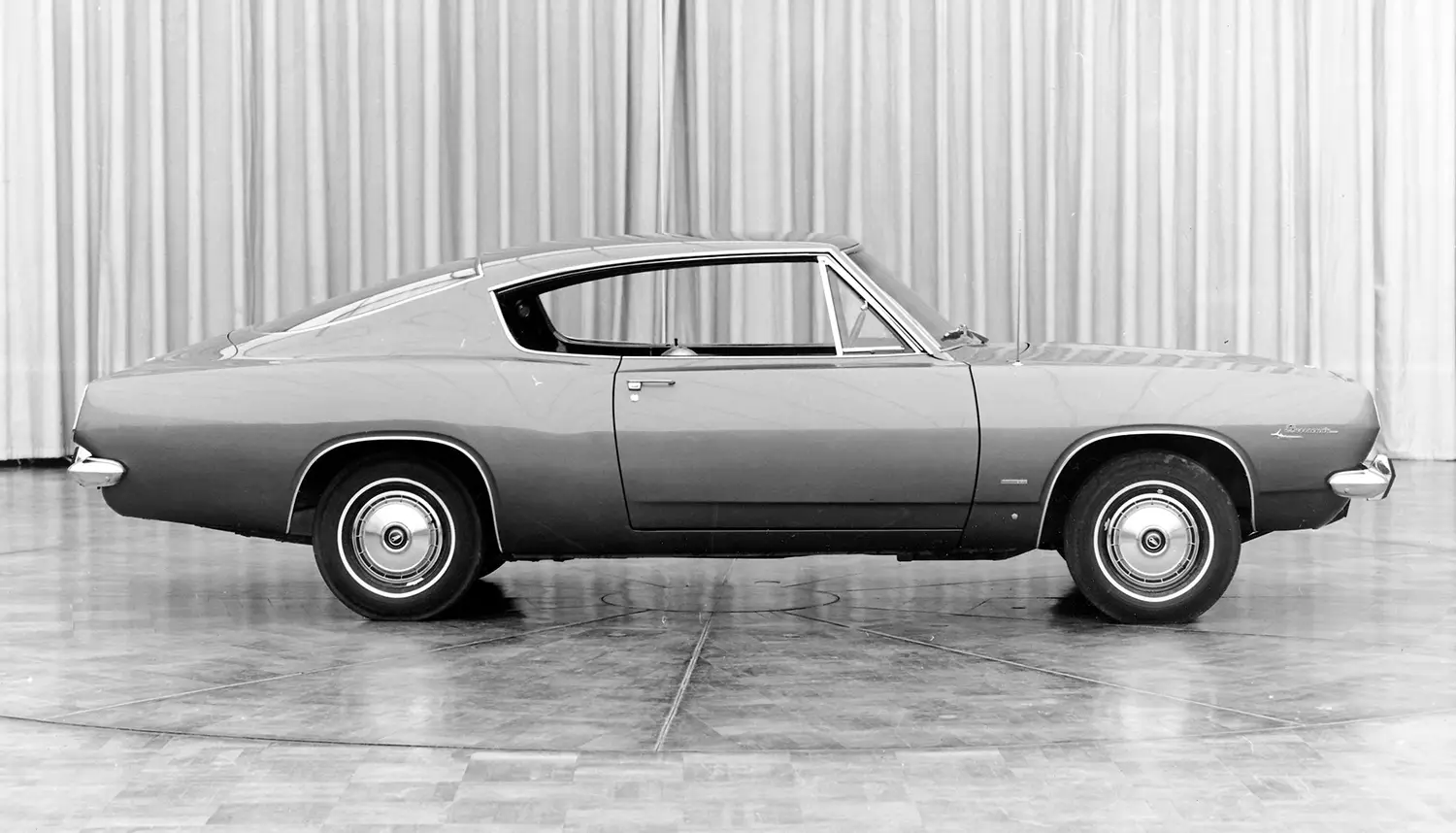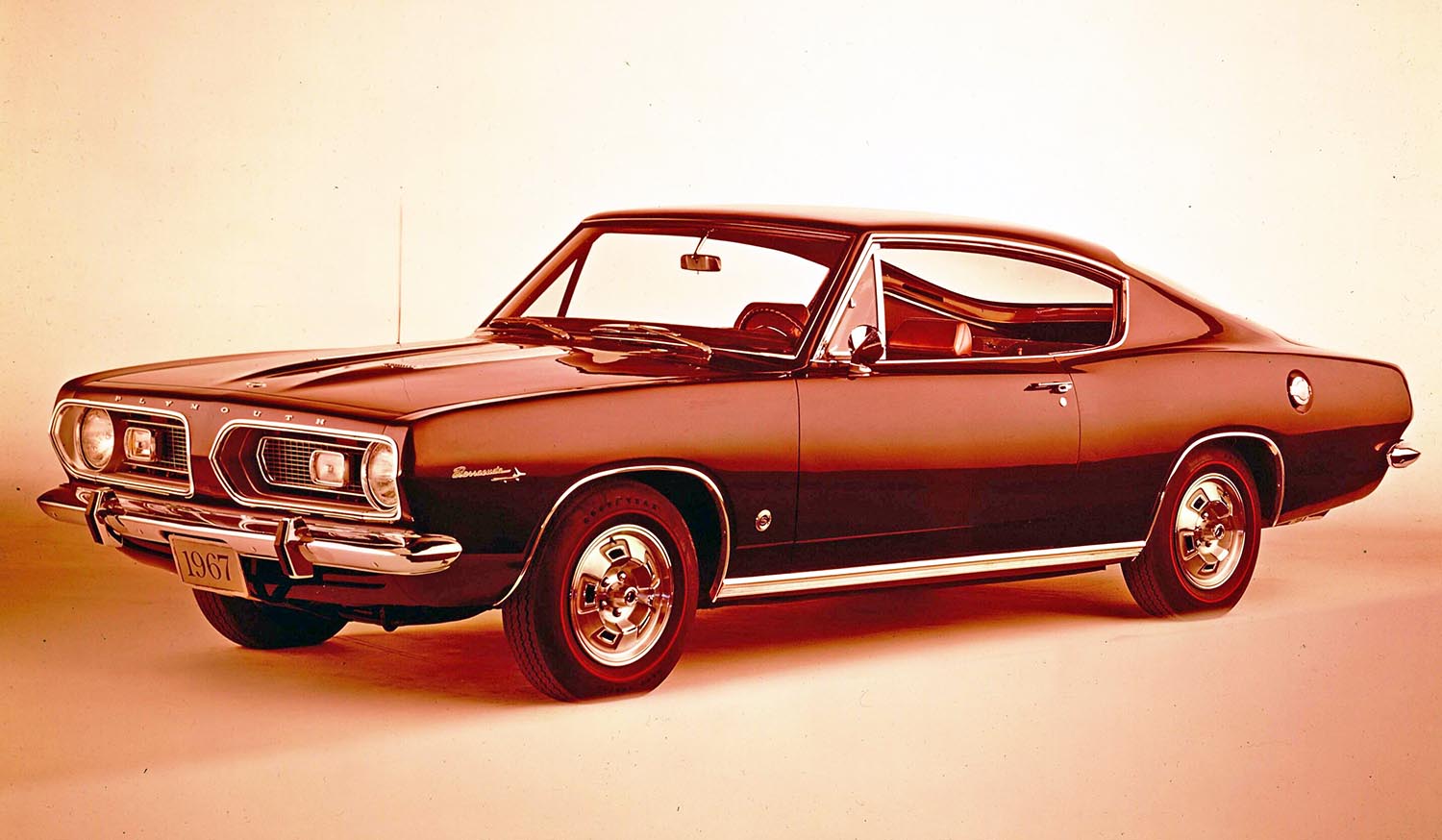
When the 1967 Plymouth Barracuda Fastback arrived, it was clear that Mopar was finally playing the pony car game for real. The original Barracuda, while beating the Mustang to market, essentially remained a fastback version of the sensible Valiant. Plymouth realized they needed a proper competitor, a car with its own distinct identity. Consequently, the 1967 redesign delivered exactly that, giving the Barracuda the muscle car credentials it desperately required. This second generation signaled a major shift in Plymouth’s approach to performance.
Shedding Its Economy Car Skin
Plymouth’s designers, led by John Herlitz and John Samsen, completely rethought the car for 1967. They kept the Valiant’s A-Body platform and 108-inch wheelbase but discarded most of the shared sheet metal. The result was a stunning vehicle with sweeping “Coke-bottle” side contours. The fastback, in particular, looked much more streamlined and purposeful. They replaced the previous generation’s enormous wraparound rear glass with a smaller, more steeply raked window. This new design immediately made the 1967 Plymouth Barracuda Fastback a serious styling contender.
The Fastback Body: A Triumphant Reshape
The fastback body style was the original Barracuda’s signature. For 1967, it was perfected with a more graceful, flowing roofline. This profile gave the car a speed-inspired silhouette, living up to its predatory name. Importantly, the redesign also introduced two other body styles: a notchback coupe and a convertible. This comprehensive lineup put the Barracuda on equal footing with rivals like the Ford Mustang and Chevrolet Camaro. Furthermore, the new body allowed for wider wheel openings. This subtle change permitted fitting larger tires for improved grip and stance.
Interior Details and Driver Focus
Inside, the 1967 Barracuda continued to offer options for both practicality and performance. The rear seat still folded down in the fastback. This created a huge, usable cargo area, demonstrating the car’s utilitarian roots. However, the available Formula S package brought more aggressive instrumentation. This included a rallye gauge cluster and a 150-mph speedometer. Therefore, the interior now genuinely catered to the enthusiastic driver. The overall feel moved away from the basic Valiant cabin toward something truly sporty.
Expanding the Performance Blueprint
The 1967 model year was revolutionary because the engine bay was widened. This key engineering change finally allowed big-block engines to be factory installed. Previously, the Barracuda was limited to smaller displacement V8s. Now, Plymouth could offer power that was competitive in the burgeoning muscle car wars. This decision dramatically altered the Barracuda’s reputation from a sporty compact to a genuine high-performance machine. The 383 cubic-inch V8 option was the crowning achievement of this redesign.
Performance: Introducing Big-Block Power
The 1967 Plymouth Barracuda Fastback was available with several strong engine choices. Base models came standard with the 225 cubic-inch Slant-Six engine, rated at 145 horsepower. Stepping up to the V8 options, buyers could choose the 273 cubic-inch V8, delivering 180 horsepower. The highest-performance 273 engine, the “Commando,” produced 235 horsepower. Crucially, the Formula S package introduced the big-block 383 cubic-inch V8. This powerhouse churned out 280 horsepower and 400 lb-ft of torque. The 383 V8 necessitated mandatory front disc brakes due to the extra weight and performance. Buyers could pair these engines with a three-speed manual, an optional four-speed manual, or the rugged TorqueFlite automatic transmission.
The Foundation for the Legendary ‘Cuda
While the legendary ‘Cuda nameplate wouldn’t officially appear until 1969, the 1967 model laid the essential groundwork. The ability to fit the 383 big-block proved the A-Body chassis could handle serious power. This new design signaled Plymouth’s commitment to high-performance versions of their popular fastback. The 1967 Plymouth Barracuda Fastback was a critical step in the model’s evolution. It successfully bridged the gap between the Valiant-based original and the iconic E-Body model of 1970. It deserves recognition as the Barracuda that finally grew teeth.
Disclaimer: Content on this site is for informational purposes only. Vehicle specs, pricing, and availability may change. Always verify details with official sources before making decisions. Opinions are those of the authors.
Source: Stellantis

